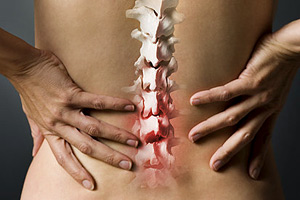- Craving: the urge or need to drink
- Loss of control: inability to stop drinking once one has started
- Physical dependence: withdrawal symptoms
- Tolerance: a greater amount of alcohol must be consumed to get to the same state of “high” as before
Early Stages:
- Activities are planned around drinking
- Sneaking drinks or hiding alcohol usage
- Drinking occurs to relieve stress
- Blackouts, the inability to recall or remember events or parts of time that happened while drinking
- More and more thoughts about alcohol
- More and more alcohol is required to feel drunk
- Lack of ability to keep promises
- Refusal to admit a drinking problem
- Drinking more than planned
- Drinking immediately after awakening from sleep
- Personality changes or mood swings
- Attempting to control drinking with mind games (ex. Telling one’s self not to drink prior to noon)
- Severe withdrawal symptoms, such as delirium tremens
Age – Those who start drinking at an early age (16 or earlier) are at a higher risk of developing alcohol dependence or abuse.
Genetics / Family History – Your genetics / family history may increase or decrease the chance that you become an alcoholic.
Gender – Men are more likely to become alcohol dependent than women are.
Emotional State – Having severe depression or aniexty increases the chance of abusing alcohol; adults that are diagnoised with attention-deficit / hyperactivity disorder (ADHD) also have a greater risk of developing alcoholism.
Alcoholism: Complications
Alcohol depresses the central nervous system; for some people this means that the initial reaction may be stimulation. As you continue to drink, the effect becomes sedated. Alcohol lowers a person’s inhibitions and affects emotions, thoughts, and judgment. Additionally, a heavy drinking binge can even cause a life threatening coma. Over time, continuous alcohol use can cause fatigue and short term memory loss, as well as, weakness and paralysis of the eye muscle. Other server effects of alcohol include:
- Liver disorders: Heavy drinking can cause alcoholic hepatitis and inflamation of the liver. Signs and symptoms can cinlude a loss of appatite, nausea, vomitting, fever, yellowing of the skin (jaundice), abdominal pain, and confusion. If a person continues to drink for years, hepatitis may lead to cirrhosis, an irreversible and progressive disease that destroys and scars the liver tissue.
- Cardiovascular issues: Drinking excessively may lead to high blood pressure and damage to the hear (cardiomypathy). These conditions increase the risk of heart stroke of failure.
- Birth defects: Alcohol use during pregnancy can cause fetal alcohol syndrome. This condition causes birth defects, such as small head, heart defects, shortening of the eyelids, and an array of other abnormalities.
- Gastrointestinal problems: Alcohol can result in the inflammation of the stomach lining (gastritis) and an interference with the absorption of the B vitamins, especially with folic acid and thiamin. Furthermore, drinking heavily can damage the pancreas, which is responsible for producing the hormones that regulate metabolism and the enzymes that digest proteins, carbohydrates, and fats.
- Diabetes complications: Alcohol prevents the release of glucose from the liver; this can increase the risk of low blood sugar (hypoglycemia). If a person already has diabetes, this can be quite dangerous as that person is already taking insulin to lower their blood suagr level.
- Bone loss: Alcohol can interfere with the production of new bone; this can result in the thinning of bones and an increased risk of bone fracture.
- Increased risk of cancer: Continued alcohol abuse has been connected to a higher risk of various cancers, such as cancer of the pharynx, esophagus, larynx, mouth, rectum, colon, breast, and liver.
- Sexual function and menstruation: Alcohol abuse can result in erectile disfunction in men, and it can interrupt menstruation in women.
- Neurological issues: Heavy drinking affects the central nervous system; this can cause the numbing of the hands and / or feet, disorders thinking, and dementia.




